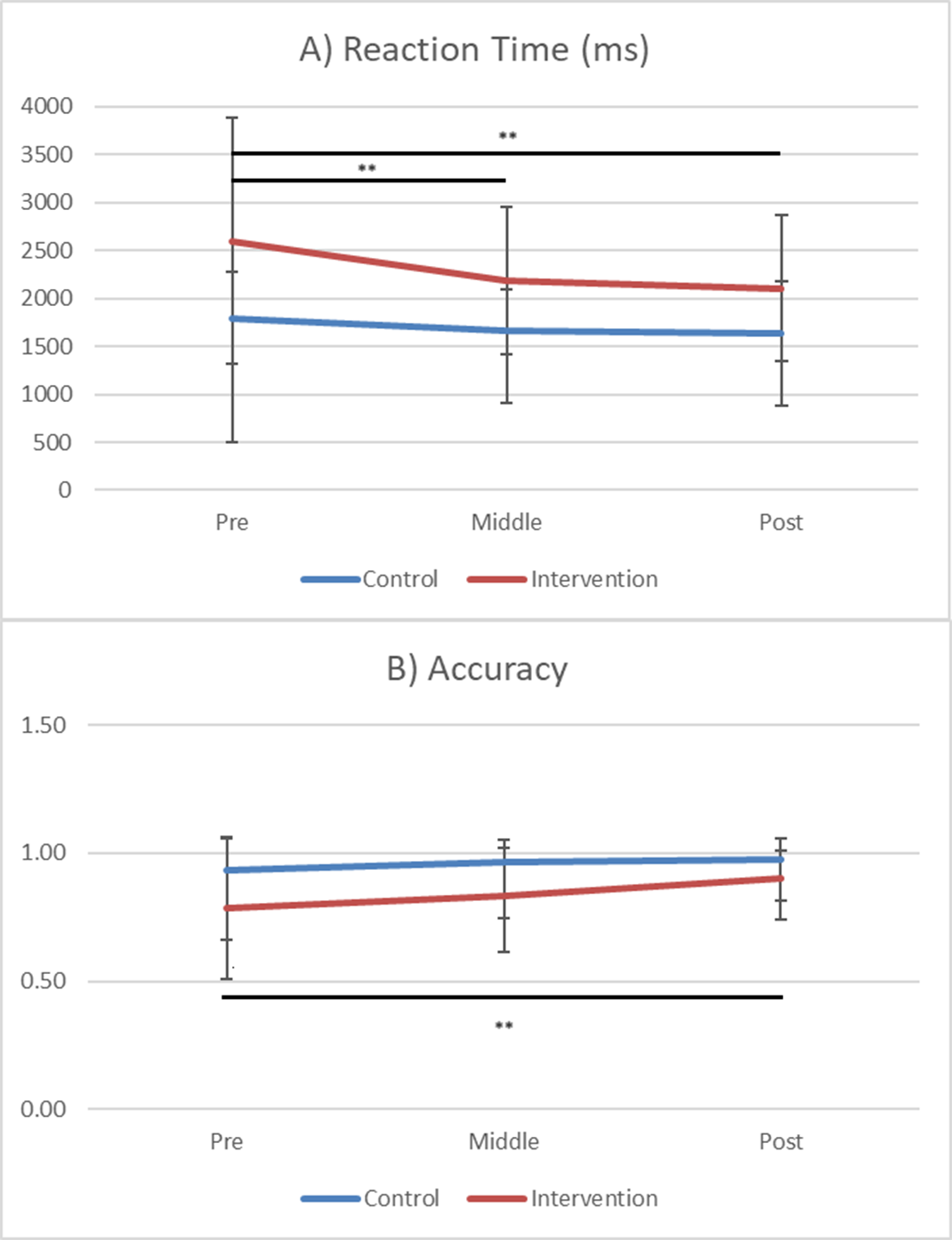Jun 28, 2024PRESS RELEASE
Rikkyo University verifies that hybrid exercise improves the mental and physical functioning of older adults
Keyword:RESEARCH
OBJECTIVE.
The research group of Professor Masato Kawabata of the College of Sport and Wellness at Rikkyo University, in collaboration with Nanyang Technological University (Singapore), has announced that they conducted an intervention trial of online/in-person hybrid Square Stepping Exercise (SSE) in older adults in Singapore and found significant improvements in cognitive, physical, psychological, and group functioning in older adults who completed the hybrid SSE intervention. Hybrid SSE is expected to effectively improve the physical and mental health of older adults living in remote areas and homebound people. The results were published in the international journal BMC Geriatrics on April 25.

Reaction Time (RT) and Accuracy of Correct Stroop Performance in the Incongruent Condition. The intervention group showed significant improvement in RT (p =.002) and accuracy (p =.013) from pre to post, where no difference was found for the control group (RT: p =.112; accuracy: p =.063). Note. ms = milliseconds. Error bar: SD. ** p <.01.
The results showed that hybrid SSE was highly effective in improving executive function and physical and psychological functioning. Furthermore, participants reported increased engagement in the training task, social communication, and bonding and closeness with their group members. Cognitive function was assessed with the Stroop Color-Word Test (SCWT) and TMT, and psychological and group functioning was assessed using the Subjective Vitality Scale and the Physical Activity Group Environment Questionnaire.
Journal Information
Title: Effects of Square Stepping Exercise on cognitive, physical, psychological, and group functioning in sedentary older adults: A center-based hybrid trial
DOI: 10.1186/s12877-024-04904-7